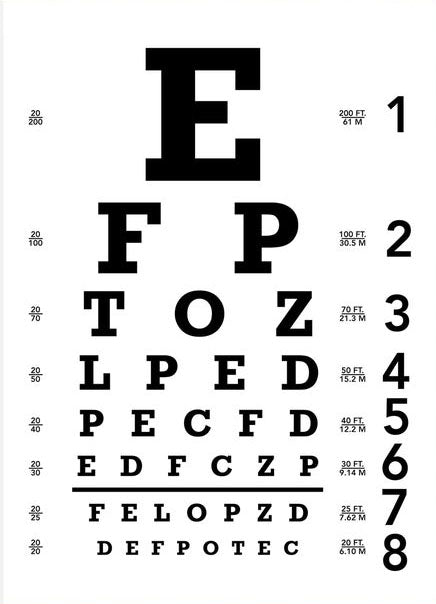How do I know if I need my prescription added to dental loupes?

How do I know if I need my prescription added when purchasing dental loupes or surgical loupes?
This is probably the most common question people ask, once they have made a decision to purchase a pair of dental or surgical loupes. It’s a simple question, but requires a more complex answer. One of the goals in wearing dental loupes, is to have higher resolution and more clarity. It is important to remember, however, that while dental loupes enhance the viewing experience, they don’t correct the doctor’s or hygienists’ vision. So, what should you consider regarding prescription options when purchasing dental loupes?
Do you currently use a prescription to read and/or have better clarity when viewing an object(s)?
If you are currently wearing glasses with a prescription for farsightedness (you don’t see objects as well with your near vision), then you will most likely need that same prescription installed into your dental loupes.
Again, dental loupes enhance your vision and provide greater clarity, but they do not “correct” your vision, as your prescription glasses do, when you wear them to read and/or perform procedures. Some professionals feel that their prescription is so minor, that they don’t see the need to install their prescription in either the back of the dental barrels, or in the carrier lens of the frame. And sometimes that may be true, but in most cases’, you may pay the price with unneeded eye strain, headaches and overall fatigue.
Our eyes can and will adjust to most environmental circumstances, but you do pay a price as the loupe user. The whole point of wearing loupes is to provide better clarity and viewing experiences, without having to strain your eyes or other parts of your body. This is also why you develop eye strain and headaches when wearing loupes that are of a lesser quality and/or use glass that has built-in distortion.
Again, your eyes adjust and keep working to provide clear, distortion free images, but those efforts are not sustainable and may result in eye fatigue, strain and headaches. If you need a prescription to see objects nearer to you, then you most likely need that same prescription in the back of your dental barrels.
Do I need a prescription in the lenses of the frame?
This depends on several factors:
For Through-The-Lens (TTL) Loupes:If you are wearing TTL loupes, you would need to put your corrected, near vision Rx into the back of the optical barrels. You would have the choice of installing your near, mid-range, or distance RX into the carrier lens of the frame. Keep in mind, however, that when TTL barrels are mounted into the carrier lens with your installed RX, they will replace a large portion of your near correction, as the barrels will be installed at the same place on your carrier lens as your near Rx. Many doctors choose to only install their near correction in the back of the barrels and opt not to install an RX in the lenses of the frame. Or, if they do install an Rx in the frame lenses, they choose their mid-range so they can see their computer. If you choose your distance, keep in mind that is a distance of about 20 feet, so the mid-range may be a better choice if you need to clearly see objects closer, like a computer screen. |
 |
|
Through-The-Lens (TTL) Loupes: A. The optical barrel. When a user looks through his or her optical barrels, they should see the image directly in front of them in perfect focus. If you have a reading/close up prescription, you should place it here to ensure what you are seeing in front of you is clear. B. The carrier lens. When a medical or dental practitioner is wearing loupes and they are looking through the carrier lens, they are trying to see objects at mid-range or distance, such as the computer screen or clock on the wall. If you have a mid-range or distance prescription, you should place it in the carrier lens. C. Both A & B |
For Flip-Up Loupes:If you are selecting Flip-Up loupes, then the prescription can only be installed in the frame lenses (carrier lenses). The prescription would not be installed into the back of the barrels. When you flip your barrels down, you will then be looking through the lenses in the frame (carrier lens), with your corrected vision, and then looking through the barrels. When you flip the barrels up, you are now just looking through the carrier lens of the frame, which has your corrected vision prescription installed. You do have the ability to install a bi-focal in your carrier lens of the frame, so when the barrels are in the down position you are looking through your near corrected vision, and when the barrels are flipped up, you are then looking through the mid or distance correction of the prescription. Prescriptions in the carrier lenses for Flip-Up loupes, give you more options regarding your prescription. |
|
Flip-Up Loupes: Optical prescriptions can only be placed in the carrier lens in a flip-up loupe. This diagram depicts prescription placement in a flip-up loupe. |
| A. The carrier lens. With flip-up loupes, prescriptions can only be placed in the carrier lens. If you have a near and/or reading prescription, it is essential that you place your prescription in the carrier lens of your flip-up loupes; this will allow you to see what is in front of you when you are looking through the barrels of your loupes. And, when the barrels are flipped up, you will have the full view of the carrier lenses with a choice of your near, mid-range or distance installed, as well as a bi-focal option. |

